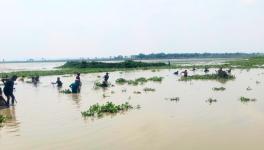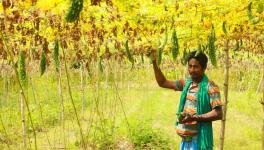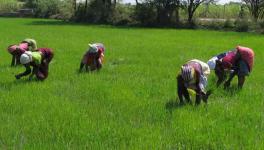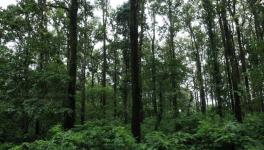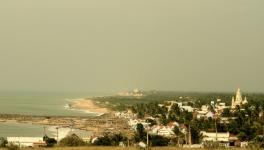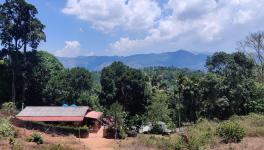How a New Hydroelectric Project Is Threatening the Fragile Ecology of Nilgiris
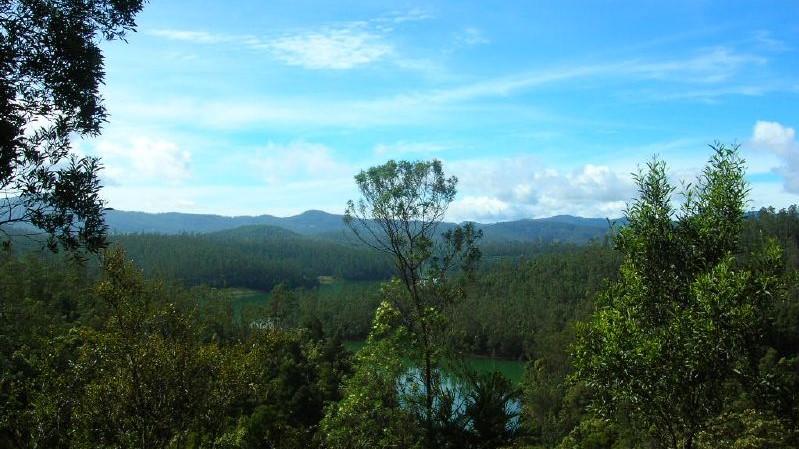
Image Courtesy: Wikipedia
New Delhi: Environmental activists and civil society groups are up in arms against the Tamil Nadu state government allegedly for pushing through a new hydroelectric project in the ecologically fragile Nilgiris. It has been alleged that the state-run Tamil Nadu Generation and Distribution Corporation (TANGEDCO) has gone ahead with the proposal for the power project without conducting a public hearing or an environment impact study.
However, as per TANGEDCO, no rule of law is being flouted in the execution of the project and a public hearing will be conducted in due course of time. The 4 X 250 megawatts (MW) pumped-storage hydroelectric project has been proposed across the Sillahalla river in Nilgiris district of Tamil Nadu.
“A proper assessment of the possible impact of the hydroelectric project on the environment of Nilgiris should have been conducted before proceeding with the proposal. There is a lot at stake in the Nilgiris in terms of ecology and environment. The project site is located in an area that is rich in biodiversity and sustains a whole environmental ecosystem,” said Nilgiris-based restoration ecologist Vasanth Godwin.
The project site falls within the draft Western Ghat Eco Sensitive Area and is located at a distance of 3.49 km from the Mukurthi National Park and 4.18 km from the Mudumalai-Mukurthi Tiger Corridor. The area, as per environmental activists, is home to endangered populations of wildlife including Nilgiri tahr, Nilgiri marten, Nilgiri langur, Nilgiri laughing thrush, Nilgiri pipit, horse-shoe pit-viper, Nilgiri salea, rusty spotted cat, leopard cat, mouse deer, barking deer, dholes, leopards, and tigers.
Last week, a group of 374 environmental activists issued a public appeal to the Union Ministry of Environment, Forests & Climate Change (MoEF&CC) appraising it that the region where the project has been planned is not only ecologically fragile but is also prone to landslides. The activists urged upon the central government to scrap the project because it could have huge social and environmental costs.
“Any tampering with the fragile ecosystem of the Nilgiris will have its adverse impacts on the environment either in the short-term or in the long-run,” said Dr Anita Varghese of Keystone Foundation, a non-profit organisation, who is a signatory to the public appeal.
Civil society members are concerned over the fact that construction of multiple hydroelectric projects in the region will have larges-cale impacts on human populations too apart from disturbing the local ecology, wildlife and flora, and fauna. Since the year 2007-08, the TANGEDCO has been in the process of constructing a hydroelectric project across River Kundah in the Nilgiris. Activists apprehend that construction of a new project across river Sillahalla, which is a tributary of the Kundah, will affect the entire natural watershed region of the riverine system. The Sillahalla river joins Kundah River at a distance of less than 2 km from an existing dam of the 60 MW Kundah Power House I project.
“The Kundah watershed region is also the lifeline for thousands of indigenous people, and local farmers who live and cultivate in this region. Apart from this, thousands of indigenous people’s communities and local farmers downstream depend on a healthy, unimpeded flow of water in these rivers, downstream. The southern slopes of the Nilgiri plateau, where various tributaries of the Bhavani River flow downstream, is a relatively dry and rain-shadowed region. This region supports unique lower elevation grasslands, evergreen hills forests, moist deciduous forests and dry deciduous forests … The entire Kundah-Bhavani river complex is crucial in sustaining all this diversity of life in this region,” the activists have said through their appeal.
As per activists, an estimated 10,000 people will be displaced by the construction of dams for the project that will lead to submergence of land. The Sillahalla project envisages the construction of two dams – one upstream and the other downstream. As per a preliminary report prepared by the TANGEDCO for submission to the Expert Appraisal Committee of the MoEF&CC, around 170 hectares of land will come under submergence by the construction of the dams out of which 135 hectares will be for the upper reservoir and 35 hectares for the lower reservoir. The citizens’ group has expressed apprehensions about the re-occurrence of social unrest in the Nilgiris, owing to forced evictions and lack of proper compensation for resettlement.
The TANGEDCO report cited above is at variance with the claims of civil society and says that the project site is not close to any major human habitations. Furthermore, this particular report also says that there is no reserve forest, National Park, Wildlife Sanctuary, Tiger/Elephant reserve or Biosphere Reserve in and around the project catchment. The report denies the existence of any important or sensitive species of wildlife and flora and fauna within 15 kms from the project catchment. The TANGEDCO has however acknowledged in this report that these findings are as per preliminary investigations and will be finalised based on findings of the Cumulative Environment Impact Assessment study.
As this particular area of the Nilgiris is prone to landslides resulting from heavy precipitation, it is feared by activists that the project could meet with accidents in the future. Tunnelling is a part of the proposed hydroelectric project that could result in the weakening of hillsides thereby making it susceptible to collapse during heavy rainfall.
“This region received over 2400 mm of rainfall in four days (August 8 – 11, 2019). The number of vulnerable locations in the Nilgiris has gone up from 101 in 2001 to over 300 vulnerable locations in 2019 as per GSI report. Large landslides have been recorded near the Cable-cum Ventilation Tunnels for the Kundah PSHEP near Kaducuppai, where large service roads are being constructed in hills that have shola-grassland ecology,” says the public appeal.
On July 29, the Expert Appraisal Committee of the MoEF&CC discussed the Sillahalla hydroelectric project with Tamil Nadu officials in a meeting conducted over videoconferencing over the issuance of Terms of Reference.
No forest clearance has been sought for the project so far. When contacted by NewsClick, an official of the TANGEDCO said forest clearance will be sought only when the exact layout area of the project is determined following approval of its plan by the Central Electricity Authority.
“We are awaiting the Terms of Reference from the Expert Appraisal Committee after the conclusion of the meeting on July 29. A public hearing will be held over due course of time and an Environment Impact Assessment will also be conducted as part of the Terms of Reference. A sub-committee of the Expert Appraisal Committee that had conducted a site visit in December last year had recommended for the issuance of the Terms of Reference for the proposed project,” a TANGEDCO spokesperson told NewsClick.
The five-member Expert Appraisal Committee sub-committee, which conducted the site visit in the first week of December 2019, had recommended in its report that data including those of flora and fauna and aquatic life should be collated for inclusion in the Environment Impact Assessment report for the project.
Environmental activists argue that no amount of conservation ever suffices to compensate for the disturbance of natural ecology which has been in occurrence for millions of years. The sub-committee, nevertheless, had noted in its report: “Once the draft Western Ghat Eco-sensitive (WGE) Area Notification is approved by the Competent Authority, necessary conservation measures shall be taken up in the area that is falling within WGE area in consultation with the Ministry by duly incorporating all the environmental parameters.”
Also read: Heavy Rains Predicted in Kerala, State Starts Preparations Amid COVID-19
The writer is an independent journalist.
Get the latest reports & analysis with people's perspective on Protests, movements & deep analytical videos, discussions of the current affairs in your Telegram app. Subscribe to NewsClick's Telegram channel & get Real-Time updates on stories, as they get published on our website.









